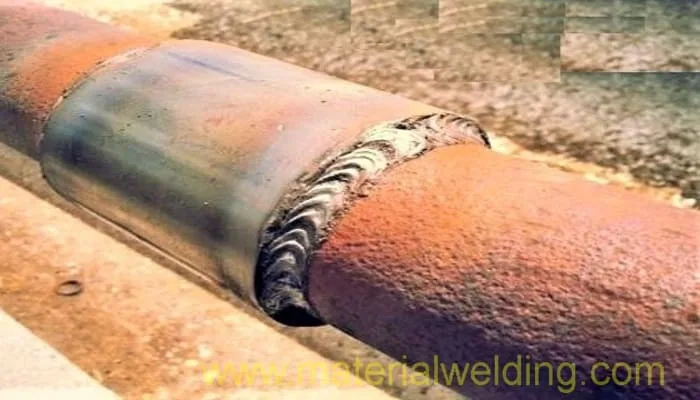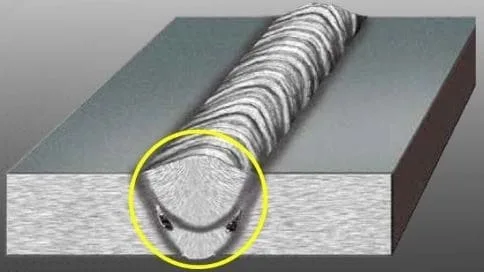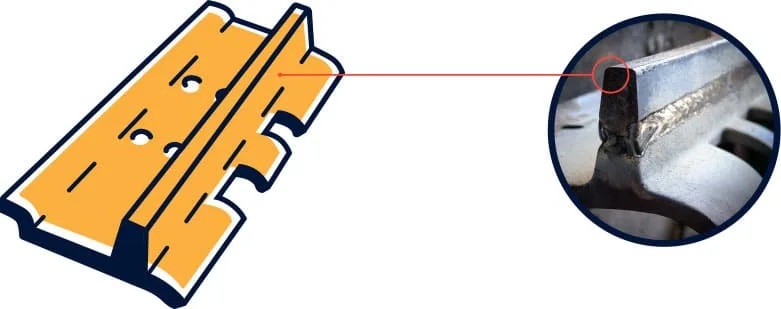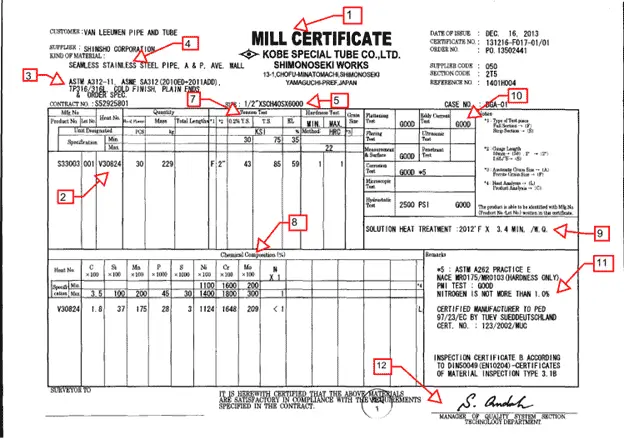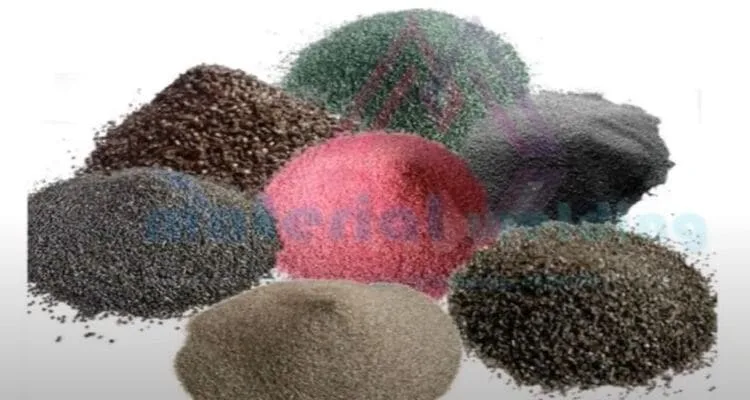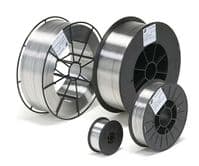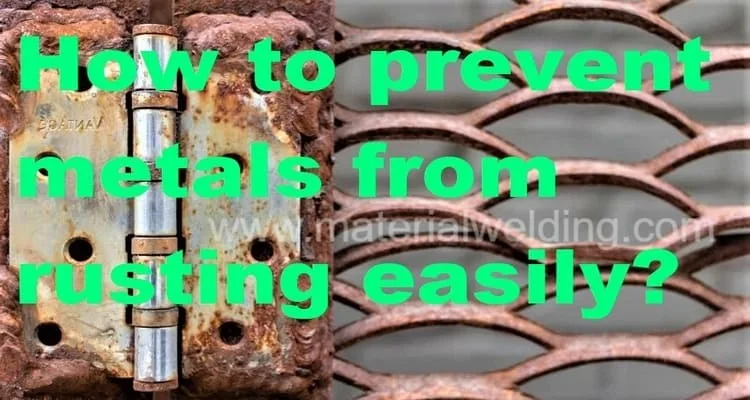Mill scale is the flaky surface of hot rolled steel, iron ores, and iron oxide products that is typically removed during preparation for welding, metalworking, or painting.
It can interfere with weld fusion, surface treatments, or the adhesion of primers and paint coatings. Mill scale removal is therefore an important step in preparing surfaces for welding, as it can cause weld porosity and degradation of the weld bead.
Additionally, the mill scale can cause corrosion of the base metal, which can lead to pitting and cracking.
What is Mill Scale?
Scale or also called mill scale is an iron oxide layer (Fe2O3) that is brownish-greyish in color. It forms on the surface of iron and steel when the metal is exposed to oxygen during hot rolling at high temperatures.
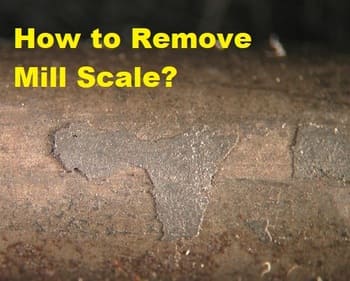
The layer is composed of iron oxide and other elements that are left behind from the heating process.
Scale is a protective film that helps to prevent further corrosion of the metal although not much beneficial for the further treatment of metal. When iron or steel is heated, the scale will begin to flake off. This process is known as scaling.
Why remove the Mill scale?
Removing the mill scale is important because it:
- To prevent rust and corrosion of the metal,
- High melting point of mill scale than base metal,
- Makes the metal easier to weld,
- It Helps paint and other coatings adhere better to the surface.
- Ease in metal forming processes.
Mill scale is a thin oxide layer that forms on the surface of hot-rolled steel. The black oxide scale can be removed from the steel surface by pickling, abrasive blasting, or grinding.
Removing the mill scale is important because it:
- Cause rust and corrosion – The mill scale can further corrode the steel if not removed. Any underlying moisture will cause more rust and degrade the metal.
- Affects Welding Quality: Mill scale can cause welding porosity, lack of weld fusion & penetration, cracking of the weld metal, and reduced weld strength. Mill scale is highly detrimental to the weld strength and its integrity. Hence mill scale must be removed before welding.
- Prevent adhesion of coating: Mill scale present on the metal surface will not let paint of any other coating stick to the surface. It will thus minimize the adhesion strength of paint which in turn will cause quality issues. The paint will tear off eventually soon and the metal will be corroded.
- Metalforming: During metal forming processes such as bending or rolling, the mill scale can prevent or affect the operation of these processes. For example, the torn mill scale can stick to rollers during rolling and affect the ovality of the rolled parts.
- To create a smooth surface: If you’re planning on painting or powder coating your project, you’ll need a smooth surface to work with. Mill scale can create an uneven surface that will make it difficult to get a good finish.
- To avoid contamination: If you’re working with food-grade metals, it’s important to remove any contaminants that could potentially come into contact with the food.
How Mill Scale affects Welding?
If you’re welding on a mill scale, it’s important to remove as much as possible before starting. If you don’t, the scale will start to melt at welding temperatures and create a weld defect. Below is a summary of welding issues you will face if mill scale or rust is not removed before welding:
- Welding Arc Stability & weld Puddle Fluidity: Scale is an electrical & thermal insulator. Failure to remove it before welding will cause an unstable welding arc and reduced weld pool fluidity. This will cause a bad weld appearance and poor workmanship.
- Lack of fusion & penetration: Due to loss of heat transfer to the welding joint caused by mill scale, welding will not be able to fuse properly. You will notice no or little weld penetration if welded on scale or rust.
- Welding Porosity: Mill scale occurs due to the presence of oxygen. As we know, oxygen causes welding porosity. Failure to remove the mill scale or rust before welding will result in welding porosity due to the presence of oxygen in the mill scale.
- This is because when the mill scale is heated, it produces a volatile compound that escapes from the surface and leaves tiny pores behind.
- Bad Welding: Due to the issues listed above, the weld will have inferior welding quality and bad-looking welds because of the mill scale. Mill scale can also cause welding problems by increasing the risk of slag entrapment.
- Poor Strength weld: As the weld will not be able to fuse properly or penetrate in the metal, the strength of the weld metal will be reduced due to mill scale or rust.
All of these issues can be overcome by using appropriate welding techniques and taking precautions to remove mill scale prior to welding.
How to Remove the Mill Scale?
If you’re planning on painting or welding steel, it’s important to remove the mill scale first. Mill scale is a thin layer of iron oxide that forms on the surface of structural steel when it’s exposed to oxygen and moisture.
You can remove mill scale with a variety of methods, including sandblasting, pickling, grinding, and chemical stripping. Sandblasting is the most common method for removing mill scale from steel.
Remove the mill scale by sand-blasting
Sandblasting is a process that uses high-pressure air to blast abrasive particles at a surface. This will remove the mill scale, as well as any rust or paint that may be on the surface.
Sandblasting is a fast and reliable method for rust or mill scale removal. It is efficient compared to other methods and should be used as a first choice.
It’s important to use the right type of abrasive for sandblasting. For steel, you’ll want to use an abrasive that’s hard enough to remove the mill scale, but not so hard that it damages the steel beneath.
Remove the mill scale by Grinding
It’s easy to remove mill scale by grinding it off with an angle grinder. This method is particularly well-suited for small areas of mill scale, as large areas can be time-consuming. When using this method, it is important to take care not to damage the underlying metal.
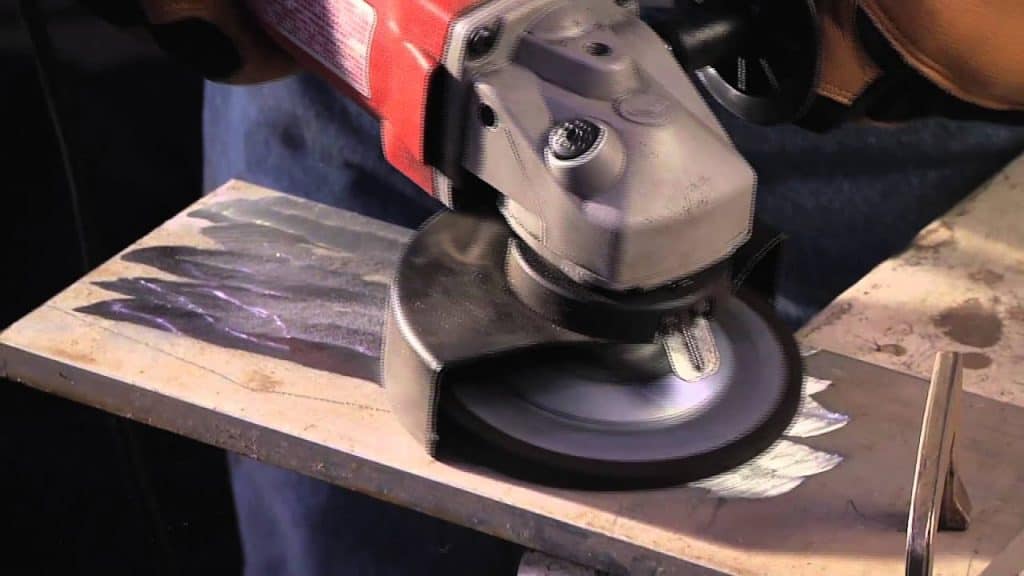
To remove mill scale, simply attach a metal grinding disc to your angle grinder and grind away. Be sure to wear proper safety gear, such as a dust mask and gloves, while doing this.
Remove the mill scale by Pickling
Pickling is another popular method for removing mill scale. This involves using an acidic solution to dissolve the mill scale.
The pickling process consists of using acid to remove the mill scale. The most common acid used for this purpose is hydrochloric acid.
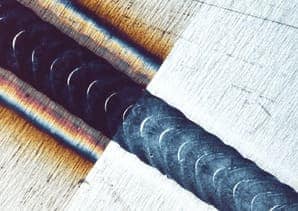
Pickling is done by immersing the steel in an acidic solution. The acid reacts with the mill scale and breaks it down into small pieces. The mill scale is then removed from the surface of the steel.
Remove the mill scale by Chemical stripping
Chemical stripping is a more expensive but much less time-consuming method for removing mill scale. This involves using a caustic solution to dissolve the mill scale.
Chemical stripping is done by using a strong acid or base to chemically react with the mill scale. This reaction breaks down the mill scale and allows it to be easily removed from the surface of the steel.
Chemical stripping is a quick and effective way to remove mill scale, but it can be dangerous if not done properly. Always follow the manufacturer’s instructions when using chemicals and take precautions to protect yourself and your work area.
Welding on the Mill Scale or Rusty Surface
Welding on the mill scale or rusty surface can be challenging because these surfaces can impede the flow of electricity. However, with the right technique, welding rod, and equipment, welding on these surfaces is possible.
- The first step is to clean the surface that will be welded if possible. This can be done with a wire brush or grinding wheel.
- Use a welding wire or rod with a high amount of deoxidizers. For stick welding, it is good to weld with E6010 as it provides deeper weld penetration.
- For TIG and MIG welding on a rusty mill, scale surface- go for ER70S-2 which has triple deoxidizers to eliminate adverse effects of mill scale on the weld.
Welding on mill scale or rusty surfaces requires a bit more care and attention than welding on clean surfaces. However, with the right preparation and techniques, it’s possible to create strong, lasting welds on these challenging materials.
